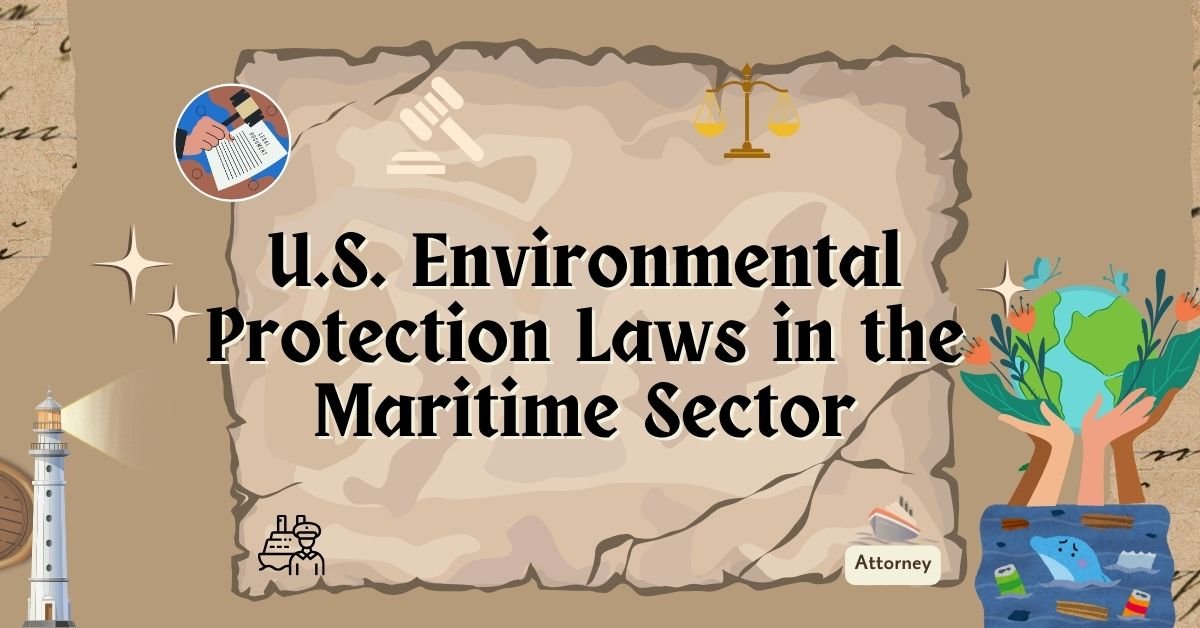Introduction
In the U.S. maritime sector, environmental protection laws play a crucial role in preserving marine ecosystems and ensuring sustainable operations. This article provides an in-depth look at these vital regulations.
Overview of U.S. Environmental Protection Laws
A broad range of laws governs environmental protection in the maritime sector, aimed at safeguarding water quality, preventing pollution, and protecting marine life.
The Clean Water Act (CWA)
The CWA is fundamental in regulating discharges into U.S. waters, directly impacting maritime activities like shipping and port operations.
The Marine Protection, Research, and Sanctuaries Act (MPRSA)
This act, also known as the Ocean Dumping Act, regulates dumping activities in ocean waters, crucial for maintaining marine health.
Oil Pollution Act (OPA)
OPA establishes strict liability for oil pollution, ensuring that responsible parties are held accountable for oil spill prevention and response.
The National Environmental Policy Act (NEPA)
NEPA mandates environmental impact assessments for significant maritime projects, influencing decision-making processes in the sector.
Marine Debris Regulations
These regulations address the growing issue of marine debris, focusing on prevention, reduction, and management strategies.
Ballast Water Management
Ballast water regulations are key in controlling the introduction of invasive species, a major threat to marine ecosystems.
Emission Control Areas (ECA) Compliance
ECAs aim to reduce air pollution from ships, with stringent rules on emissions of sulfur oxides, nitrogen oxides, and particulate matter.
Ship Recycling and Environmental Compliance
Laws governing ship recycling ensure environmentally responsible disposal and recycling of ships, preventing pollution and resource waste.
Role of the Environmental Protection Agency (EPA)
The EPA plays a significant role in enforcing maritime environmental laws, working alongside other federal agencies.
Compliance and Enforcement Mechanisms
Compliance with these laws is enforced through inspections, monitoring, and penalties for non-compliance, ensuring adherence to environmental standards.
Challenges in Implementation
The maritime sector faces various challenges in implementing these laws, including technological limitations and international compliance issues.
Future of Environmental Protection in the Maritime Sector
Future trends may include stricter regulations, technological advancements for compliance, and increased global collaboration.
Conclusion
U.S. environmental protection laws are essential for the sustainability of the maritime sector. Adherence to these regulations not only ensures legal compliance but also contributes to the health of global marine ecosystems. Play sprunki phase 28 Anytime, Anywhere!
FAQs
- How does the Clean Water Act affect maritime operations?
- What are the requirements under the Oil Pollution Act for ships?
- What role does the EPA play in the maritime industry?
- How do environmental laws impact international shipping?
- What future changes are expected in maritime environmental regulations?
